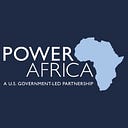Shaping Senegal’s Energy Transition Strategy

Renewable, cleaner energy options is key to Senegal’s drive to increase electricity access. Through Power Africa, the United States is providing technical assistance to help shape Senegal’s Energy Transition Strategy and build a climate-smart future for all.
During the 2022 U.S.-African Leaders Summit, President Biden affirmed and reinforced the United States’ partnership with African governments to mitigate climate change, including increased investment in Power Africa. Accordingly, Power Africa is placing a renewed focus on assisting partner governments to develop and implement energy transition strategies–strategies that support climate change mitigation, increase energy access, and protect livelihoods.
Power Africa is now working with the Government of Senegal to implement an Energy Transition Strategy that builds on the country’s strong position to invest in cleaner power generation and its inclusion in the G7 “Just Energy Transition Partnership”.
How the Strategy Works
Senegal’s Energy Transition Strategy details several decarbonization recommendations centered on the country’s gas-to-power transition, including innovative approaches to utilize gas infrastructure to develop renewable energy, such as renewable gas, over the long term. The conversion of existing power plants to natural gas, alongside the construction of new combined-cycle power plants, represents a tool for decarbonization in the short term, with the potential to reduce CO2 emissions by about 30 percent. In addition, the strategy will facilitate the development of renewable energy projects and lower the cost of power generation in the short term while supporting carbon neutrality in the long term.
Recommendations also include elements such as capacity building to streamline planning and operational measures, increased greenhouse gas (GHG) measurement and optimization, additional support for other renewable energy creation (e.g., wind and solar), cogeneration, the establishment of a carbon market, and support for a biomethane sector. The strategy also envisions a long-term green hydrogen policy, which could support the decarbonization process and achieve carbon neutrality by 2050.
Critically, the strategy also identifies more than 100 public, private, and blended options from various financing bodies that can attract the investment and financing Senegal needs to bring the strategy to life.
Next Steps for Senegal
Senegal’s Minister of Energy, H.E. Aissatou Sophie Gladima, provided a preview of the strategy at the United Nations Climate Change Conference (COP27) in November 2022. There, she showed the world how Senegal intends to decarbonize through renewables and cleaner gas-to-power transitions and outlined how Senegal’s current power generation could serve as a catalyst for renewables in the long term.
She also detailed how the strategy aligns with Senegal’s Nationally Determined Contribution (NDC) goals of reducing GHG emissions by at least 23 percent and increasing renewable energy to 30 percent of the country’s energy mix by 2030 as part of its commitment to the global climate change agenda.
Further, the NDCs under the Paris Agreement outline two main goals relating to the energy transition: (1) increasing the share of renewable energy in the national energy mix to 40 percent by 2035 by increasing renewable energy capacity, and (2) increasing the use of natural gas to replace fuel oil and coal-fired power plants. Senegal now plans to incorporate its Energy Transition Strategy into its NDCs.
Power Africa continues to support Senegal’s energy access goals and clean energy transition. Power Africa transaction advisory and capacity-building in Senegal have resulted in nearly 470,000 new electricity connections, including more than 200,000 in the past year, plus 803 megawatts (MW) of additional power generation capacity, 302 MW of which is already online.
Implementing the Energy Transition Strategy means a coordinated and efficient process for adding even more connections to power livelihoods.
